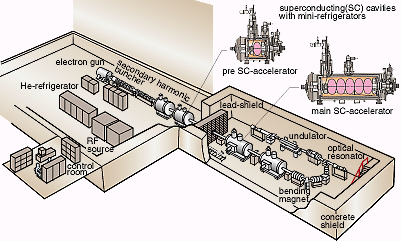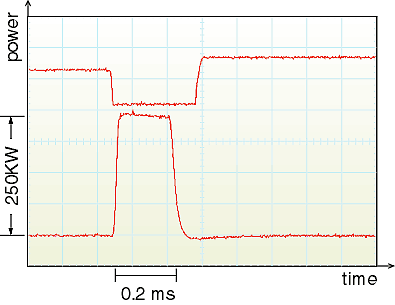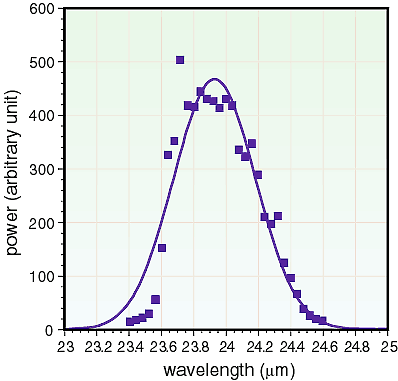In March, 1998, the free electron laser (FEL) which had been developed
in JAERI, succeeded in the highly reproducible and stable lasing
of far-infrared light (24 micrometers) with a power 100 times greater
than that in the past. The optical power is 1 MW at peak, and
more than 100 W on average considering the repetition rate. The
pulse length of lasing is 0.4 ms.
The features of the JAERI-FEL of high efficiency and high power
are due to the use of a loss-less superconducting linear accelerator
(SC-Linac). FEL itself has high practicalities which are not obtained
by existing lasers, in the free selectivity of wavelength and
monochromatic performance of the light.
In 1996, electrons were accelerated successfully up to the full
specification, 15 MeV, and the first spontaneous emission was
detected. Subsequently the delicate adjusting of the optical resonator,
the rearrangement of the control of the radio-frequency (RF) sources
for the SC-Linac, and the up-grading of the electron performance
were carried out. These endeavors have led to the present success. |


